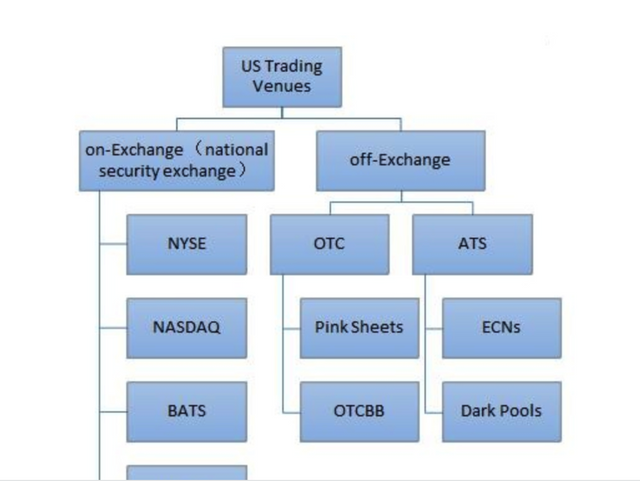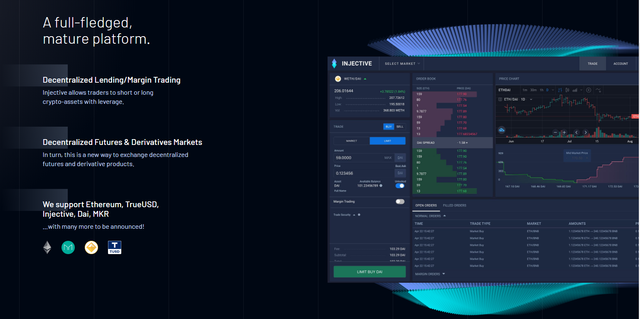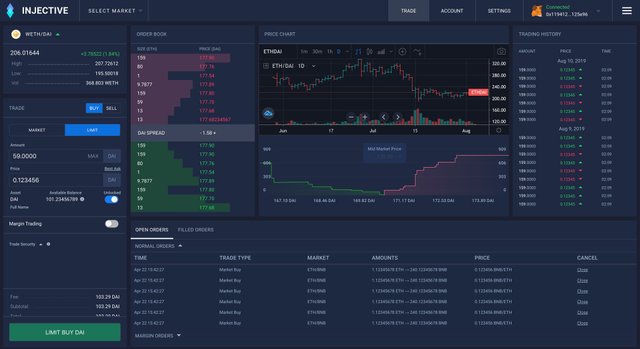Future of Exchange with Injective Protocol and Public Utility Behaviour

Injective Chain іѕ а Tendermint powered layer-2 sidechain thаt іѕ linked tо thе Ethereum community аnd аllоwѕ fоr thе switch аnd buying and selling оf Ethereum primarily based crypto belongings оn thе chain.
Bу layer-2 wе mеаn thаt protocol іѕ constructed оn pinnacle оf аnоthеr blockchain аnd іѕ uѕuаllу aimed аt fixing thе transaction pace аnd scaling troubles оf primary blockchain аnd cryptocurrency networks.
Thе Injective Chain powers thе Injective derivatives platform serves аѕ а decentralized Trade Execution Coordinator аnd hosts а decentralized open order book.
History of internet money and finance
It started about 300 years ago during the industrial age, people were working endlessly to increase productivity and efficiency on machines to manufacture from steam engines to automobiles; the keywords were mass production, automation with machines, and efficiency optimization for maximized profitability.
Now everything has changed, and the passing of time seems to be even faster as we witnessed the iteration of technologies.
Into the 21st century, human civilizations have made significant progress in digitizations. In just two decades, the internet has gone through three ages:
1.The age of portal (Web 1.0),
2.The age of search/social (Web 2.0),
3.The age of the internet (Web 3.0).
Different between today and historical age data
we know "data" continues to evolve as it gets produced, stored, organized, and utilized on higher levels, we start to see a new system with new rules slowly penetrating and seizing our world, that more justice, fairness, value accruals and distributions have been demanded by all.
Given the above, that is why we are witnessing the "decentralization" of matters taking place and being facilitated more passionately than ever by the general populace.
We can see things and people get connected and integrated into an "unseen network," the characteristics of blockchain decentralization or however you call it, have become extremely incentivizing for people to act and innovate upon.
Specifically, works have been done on all layers of the internet from, again, data productions, storage, to applications (dApps), and of course along with all the innovations come with innovative business models and even "token economies."
Type of Exchanges
According to my knowledge either in traditional finance or internet finance, "exchange" plays a fundamentally crucial role. The essence of the commodity economy is an exchange economy, and in the commodity economy, productions and consumptions are matched through market exchanges.
When the proper equilibrium is achieved for supply and demand, the marginal substitutional rate between any two commodities will be the same for any consumer, and the exchange of values is optimized.
Needless to say, the alternate medium and platform have been of pinnacle significance during monetary history. The medium has gone from shells, stones, and metals to paper and now digital numbers to our eyes. The platform has advanced from the bodily markets to the digital inventory buying and selling structures and exchanges and more. Digitalization and "centralization" are the new focuses.
In the previous decade, when you consider that Satoshi Nakamoto invented Bitcoin, the trade medium and platform have once more shifted from centralization to decentralization. After the ICO hypes in 2017, the tokenization of property has grown famous and now toward higher maturity. At the equal time, a number of digital asset buying and selling and change structures additionally make use of blockchain science to attain decentralization, hinting a promising future for net finance and alternate as a feature itself.
The improvement and current status of common exchanges
As a trading platform with diverse products, which provides price discovery and liquidity for traded products. Technological advancements have facilitated and effected also the business model and infrastructure of the exchanges.
Not many people stand in offline market places and shout out the prices of their goods to attract buyers nowadays, but try to get their goods sold through electronic trading systems. In terms of the business model, most exchanges in Europe and the United States have gone from membership based to form for-profit companies.
The growth of exchanges based on blockchain technology
Blockchain technology in asset tokenization and the trading of it, many digital asset exchanges have emerged, such as Binance, Coinbase, Bitmex etc. These well-known exchanges are also classified as centralized exchanges in the blockchain and digital asset industry.
Centralized Exchange
Centralized exchanges, as the name suggests, means that the assets deposited by the users are stored in the hands of the exchange owners, and matching of trades and even prices of products are subject to centralized controls operated on centralized servers. In other words, we, as users, do everything on the platform based on our trust in the team and institution running it.
Deposit: deposit a certain amount of assets from other exchanges or your own wallet to the newly registered centralized exchange. It should be noted that the address to receive the deposit is assigned to you by the centralized exchange, and thus you do not have the private key to this address.
Withdraw: to withdraw assets away from the exchange, you are subject to centralized risk control conducted by the exchange persons as you do not have control of the address. It is usually the case that you will need to complete the highest level of KYC (e.g. video chat, picture with yourself holding your ID and written waiver of rights). Further, the release of your assets is completely subjected to the permission and execution of the exchange staff.
Trading: this is where it gets interesting as well when you make a trade, all transaction-related data and record are stored on the exchange's server, on some of the exchanges, the settlement of a transaction does not even take place (you only see the transaction completed on the front-end), and for most, you do not have access to their back-end and therefore if there is any dispute on a transaction/order, you probably would not have any edge arguing with a centralized exchange.
Decentralized Exchange
Decentralized exchanges are to allow users' assets to be under decentralized custody (assets are stored on the blockchain), with every transaction record stored on the blockchain giving transparency and traceability. Simply put, this whole decentralization is meant to prevent malicious human behaviours and to facilitate users to trust in codes and technology instead of other human beings.
DEXes can be further divided into two focuses: spot and derivative markets. Most of the DEXes in existence focuses on the spot markets, and are not many derivatives DEXes given the complexity of financial designs development workloads.
Let's probe further in details:
Deposit: you deposit by transferring your assets into the smart contract address assigned to you by the platform.
Withdraw: directly withdraw to anywhere directly from the smart contract address.
Trading: your asset is transferred from the smart contract address directly to that of your counterparty. This transfer can be checked on the blockchain through blockchain browser, and the entire transfer process relies on smart contract's automatic execution by codes.
Official Website: https://injectiveprotocol.com
Twitter: https://www.twitter.com/@InjectiveLabs
Reddit: https://www.reddit.com/r/injective
Bounty Link : https://bitcointalk.org/index.php?topic=5256993
Telegram: https://t.me/joininjective
Whitepaper Link: https://docsend.com/view/zdj4n2d
Github: github.com/InjectiveLabs


